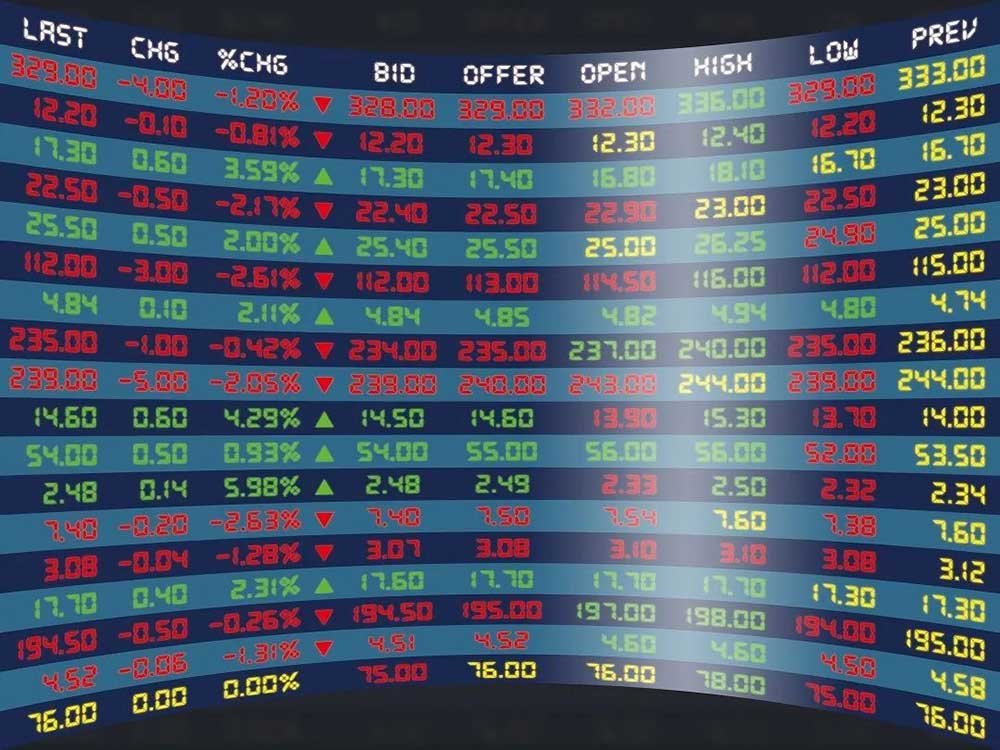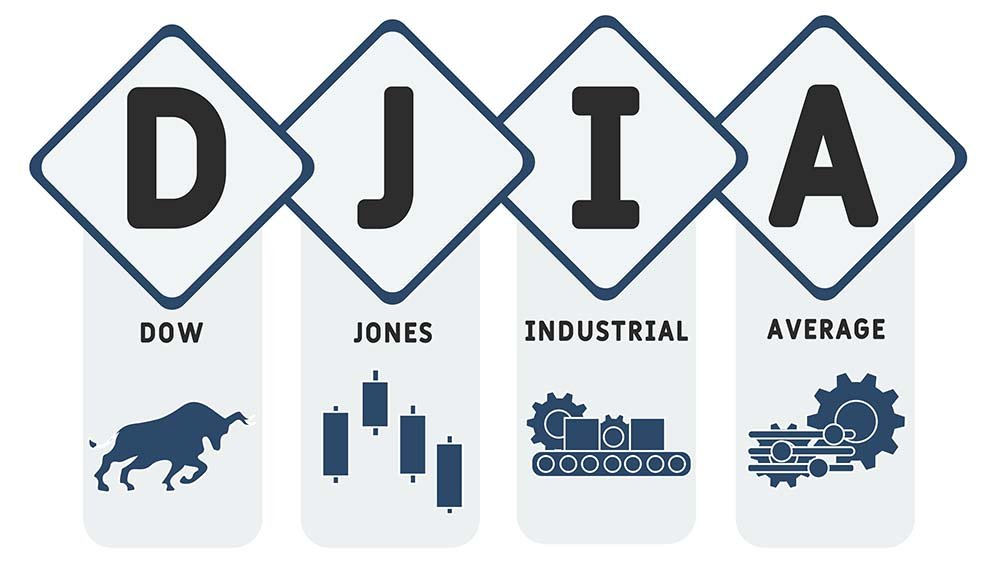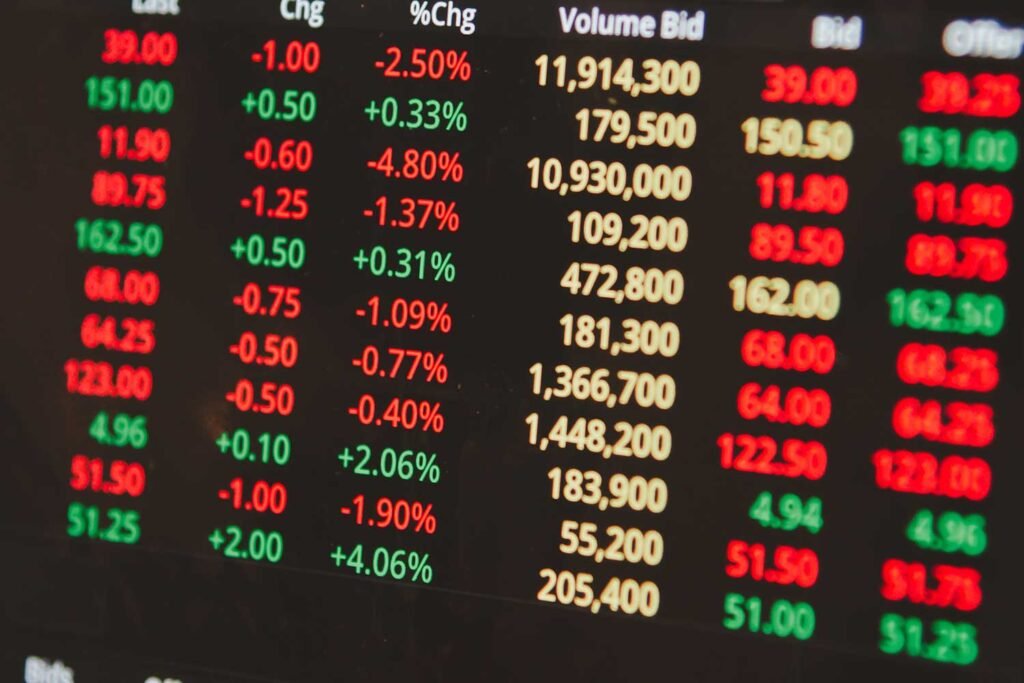Stock indexes and market sectors are very important concepts in trading that an investor must know. Stock indexes give a snapshot of the overall market’s performance, while market sectors let investors analyze specific industries. Investors can make better trading decisions about their portfolios by tracking stock indexes and market sectors.
For successful investment, it is important to learn how stock indexes work and the roles of market sectors in the economy. This article explores the main points of stock indexes and market sectors to give investors valuable insights.
What are stock indexes?

A stock index measures the value of a stock market section using prices of selected stocks. It helps investors describe the market and compare returns on specific investments.
Stock indexes are useful for investors because they give a snapshot of the whole market or a particular segment without tracking every single stock. They serve as benchmarks for evaluating the success of individual portfolios and support investments like index funds that follow the market.
Key features of stock indexes include the following:
- It represents specific market segments like large-cap, technology stocks or a specific country’s equity market
- It track prices movements and performance over time
- It is a Benchmark for evaluating individual stocks/portfolios performance
- It gives basic investment options such as index funds and exchange-traded funds (ETFs)
Types of Stock Indexes
Stock indexes can be grouped based on their geographic coverage and what kinds of stocks they follow. Here are the main types of stock indexes:
- Global indexes: Global indexes track performance of stocks worldwide, like the MSCI World Index and S&P Global 100.
- Regional indexes: These indexes focus on stocks from a particular geographic area, like Europe, Asia or Latin America. Examples of regional indexes are MSCI Emerging Markets Index and EURO STOXX 50.
- National indexes: National indexes represent a single country’s market performance. Popular national stock indexes include Dow Jones Industrial Average (DJIA) and S&P 500 for the U.S., FTSE 100 for the United Kingdom and Japan’s Nikkei 225.
- Sector specific indexes: Track specific industries like technology, healthcare or energy. The NASDAQ Biotechnology Index and the Dow Jones U.S. Oil & Gas Index are examples.
Major U.S Stock Market Indexes
Stock indexes give a snapshot of overall U.S. stock market performance. They help investors assess the health of the economy and make smart investment decisions. Let’s look at major U.S. stock indexes, starting with the Dow Jones Industrial Average (DJIA).
The Dow Jones Industrial Average (DJIA)

The Dow Jones Industrial Average, or “the Dow,” is among the oldest and most-followed stock indexes globally. Created in 1896 by Charles Dow and Edward Jones, the DJIA tracks performance of 30 large, public companies listed on the New York Stock Exchange (NYSE) and Nasdaq.
These companies regard themselves as leaders in their industries and serve as a gauge of the overall U.S. economy’s health.
The Standard & Poor’s 500 (S&P 500)
The S&P 500 is one of the most popular stock indexes globally and tracks the performance of 500 big U.S. companies. It is an important indicator to measure the overall health of the stock market and economy.
To get included in the S&P 500, a company required specific criteria, like at least $14.6 billion market capitalization and having its headquarters in U.S. The index is weighted based on market capitalization, which means bigger companies have a greater impact on their performance.
The S&P 500 covers 11 economic sectors, with information technology, healthcare, and financials having the most weight.
The Nasdaq Composite

The Nasdaq Composite focuses heavily on the technology stocks index, which includes over 2,500 companies listed on the Nasdaq exchange. It is recognized for its heavy concentration in the technology sector, with big names like Apple, Microsoft, Amazon and Google making up a substantial portion.
The Nasdaq Composite’s performance makes it common among investors looking to get technology sector exposure through stock indexes. But this concentration also makes the index more volatile than broader market indexes like the S&P 500 or Dow Jones Industrial Average.
The Russell 2000 Index
The Russell 2000 is a worldwide common stock index that tracks the performance of small-cap U.S. companies. It represents about 10% of the broader Russell 3000 index’s total market capitalization.
The Russell 2000 serves as an important benchmark for small-cap stocks and gets used a lot to compare the performance of small-cap mutual funds. It covers a diverse range of sectors, with healthcare, financials, industrials and technology having heavy weight.
Investors can get Russell 2000 exposure through index funds and ETFs that follow the performance of this important small-cap stock index.
How Stock Indexes are Constructed

Stock indexes are built by using different methodologies, each with their own rules and principles. The construction process generally involves various important decisions, such as selecting a target market, choosing securities and choosing a weighting scheme.
Common weighting schemes for stock indexes are:
- Market-cap weighted: Stocks weighted by their market capitalization relative to total index of market cap, like the S&P 500, are an example of a float-adjusted market-cap-weighted index.
- Price-weighted: Stocks are weighted by share price, with higher priced stocks having more weight. A well-known price-weighted index is Dow Jones Industrial Average.
- Equal-weighted: Each stock gets equal weight, while index value is calculated by using arithmetic average return of constituent stocks. The Value Line composite is the main example of equal-weighted index.
The creation of stock indexes requires a systematic and well-defined methodology to stay efficient and useful for investors. Index providers also consider factors like investability, liquidity and target market representation when selecting securities.
Importance of Stock Indexes
Stock indexes serve various major roles in financial markets. They work as a benchmark for investment performance, letting investors compare the returns of their individual portfolios against the broader market. Investors can assess the overall market trends and sentiment by tracking stock indexes.
Stock indexes are essential portfolio management tools that enable traders to diversify their holdings by giving exposure to a wide range of stocks with a single investment through products like index funds and exchange-traded funds (ETFs). This diversification helps reduce risk while still letting traders take part in the overall market growth.
What are Market Sectors

Market sectors are distinct parts of the economy that group together companies based on similar business activities and economic characteristics. Investors looking to diversify their portfolios and capitalize on particular industry trends should learn the importance of market sectors.
Market sectors play an important role in assessing the overall stock market performance and revealing investment opportunities. By analyzing historical returns, growth rates and risk levels in several sectors, traders can make smart decisions about capital allocation.
Diversifying across sectors spreads risk and can enhance returns. Each sector responds uniquely to economic conditions, technology and consumer preferences. Mixing sectors creates a resilient portfolio that withstands volatility.
Understanding the S&P 500 Sectors
The S&P 500 splits into 11 sectors based on the Global Industry Classification Standard (GICS). This classification system helps investors identify and analyze companies by their main business activities.
Sector classification serves an important purpose in the S&P 500. It lets investors understand index composition and make informed sector allocation decisions within their portfolios. Grouping companies with similar economic characteristics, allows investors to better assess the performance of a particular market sector and spot potential opportunities or risks.
So knowing the S&P 500 sectors is essential for investors looking to diversify their holdings and capitalize on sector specific trends. Each sector reacts differently to economic conditions, technological advancements, and changes in consumer preferences.
Breakdown of the 11 S&P 500 Sectors

The S&P 500 contains 11 distinct market sectors, each representing a specific area of the economy. It is categorized based on the Global Industry Classification Standard (GICS), which is a widely utilized methodology for classifying companies based on the company’s primary business.
- Information Technology: This sector contains companies that produce technology hardware, software and services like Apple, Microsoft and NVIDIA.
- Health Care: Healthcare industry firms include pharmaceutical, biotechnology companies and healthcare providers like Johnson & Johnson, UnitedHealth group and Pfizer.
- Financials: This sector’s companies involve in banking, insurance, asset management and other financial services companies such as JPMorgan Chase, Bank of America and Berkshire Hathaway.
- Consumer Discretionary: Companies producing non-essential goods and services like cars, apparel and leisure products fall under this sector, such as Amazon, Tesla and McDonald’s.
- Communication Services: This sector involves companies that facilitate communication and delivering entertainment content including telecommunication services, media and interactive media companies like Verizon, Meta (Facebook) and Netflix.
- Industrials: companies involved in producing capital goods like aerospace, defense, construction and transportation e.g. Boeing, Honeywell and Union Pacific.
- Consumer Staples: This sector comprises companies producing essential goods and services for daily consumption such as food, beverages and household products including Procter & Gamble, Coca-Cola and Walmart.
- Energy: Companies exploring, producing, refining and distributing oil, gas and other energy sources like ExxonMobil, Chevron and ConocoPhillips.
- Utilities: Utilities includes companies providing essential electricity, natural gas and water services, such as Duke Energy, Dominion Energy and NextEra Energy.
- Real Estate: Companies doing real estate development, management and investment trusts REITs including American Tower, Prologis and Crown Castle.
- Materials: Companies producing raw materials like metals, chemicals and construction materials,s e.g. Linde, Freeport-McMoRan and Dow Inc.
Investing in Market Sectors
Investing in market sectors allows tapping specific industry trends and potentially enhancing returns or managing portfolio risk. Allocating assets to different sectors provides exposure to industries with potential growth or with defensive properties over economic cycles.
Some popular market sector investing strategies are:
- Sector Rotation: Shifting investments across sectors based on changing market conditions or economic cycles. This strategy aims to capitalize on sectors which are expected to outperform during different phases of the business cycle.
- Thematic Investing: involves investing in sectors aligned with long-term trends like technological innovations, demographic shifts, or environmental changes.
- Defensive Investing: Allocating to defensive sectors like consumer staples, healthcare and utilities, which tend to be less sensitive to economic downturns and hold up better portfolio stability during market volatility.
- Cyclical Investing: Investing in cyclical sectors like industrials, materials and consumer discretionary that tend to thrive during economic expansions but underperform in recessions.
Sector Performance Analysis

Analyzing sector performance is important for investors to spot market trends and make better trading decisions. This analysis evaluates how factors like economic conditions, technological advancements and consumer preferences impact specific sectors. It assists strategies like sector rotation based on performance predictions.
Monitoring sectors also enables portfolio diversification and risk management. Investing across sectors can enhance returns and reduce portfolio risk since each sector behaves differently to market conditions.
Stock Research Tools for Analyzing Indexes and Sectors
Investors and traders use different stock research tools to effectively analyze indexes and market sectors. These tools provide valuable information, data, and analysis to make smart investment decisions about indexes and sectors.
Some popular tools include the following:
- Financial news sites: Offer updated information on index movements and sector performance.
- Stock analysis software: Provide deep research, technical analysis, and charting for indexes and sectors.
- Investing apps: Enable on-the-go tracking stock indexes, market sectors, and your portfolio performance
- Financial Advisory services: Offer custom investment strategies based on sector analysis and index performance.
Utilizing Data for Sector Analysis
Successful sector analysis depends heavily on using relevant data to understand sector performance, trends, and potential. Historical data plays a big role in spotting patterns and making reasonable projections about future sector behavior.
Investors and analysts should use various real-time data sources, like financial news sites, analysis software, and investing apps. Interpreting this data accurately matters for grasping what influences a sector’s performance and making data-informed decisions.
By combining quantitative and qualitative research, investors can thoroughly understand market sectors, letting them seize emerging opportunities and reduce risks in their portfolios.
Relationship Between Indexes and Sectors

Stock indexes and market sectors are very interconnected. Major market indexes like the S&P 500 contain stocks from various market sectors like technology, healthcare, and financials.
How these individual sectors perform can really influence the overall movement of the broader indexes. At the same time, how major indexes fare can also impact investor sentiment and money flows into specific sectors.
How Stock Indexes Get Calculated and Weighted
Stock indexes use different methods for calculating and weighting to give a snapshot of market performance. The three main methods are:
- price-weighted
- market-cap weighted
- equal-weighted indexes
Each approach determines individual stocks’ influence on the overall index uniquely.
Price-Weighted Indexes
Price-weighted indexes are a type of stock index, each stock’s weight depends on its price per share. Stocks with higher prices impact the index’s performance more, no matter the company’s size or market value.
To calculate a price-weighted index, the sum of all share prices in the index gets divided based on the number of companies or a particular divisor that adjusts for stock splits and other changes. For example, the famous Dow Jones Industrial Average (DJIA) uses a price-weighted methodology with 30 large U.S. companies.
While price-weighted indices are easy to understand and calculate, they have some limitations. High-priced stocks can skew the index disproportionately, potentially distorting the overall market representation. Still, price-weighted indices like the DJIA remain popular market performance benchmarks despite these drawbacks.
Market-Cap Weighted Indexes
Market-cap weighted indexes are the most common stock index type, where each stock’s weight depends on its total market capitalization. This approach ensures larger companies have greater influence on performance, reflecting their importance in the overall market.
To calculate a market-cap weighted index, first the market capitalization of each stock is determined by multiplying its share price by outstanding shares. Then, each stock’s weight gets calculated by dividing its market cap by the total market cap of all stocks in the index.
Well-known market-cap weighted indexes are the S&P 500, Nasdaq Composite, and FTSE 100. These indexes are widely used benchmarks because they represent overall market performance weighted based on constituent companies’ size.
Equal-Weighted Indexes
In an equal-weighted index, every constituent stock gets the same weight, no matter its market cap or share price. This avoids concentrating too much weight on a few large companies and provides more exposure to smaller companies.
Equal-weighted indexes get rebalanced periodically to maintain equal weights, which can increase turnover and trading costs. Examples are the MSCI Equal Weighted Index and the S&P 500 Equal Weight Index.
The choice of weighting approach depends on the investment goals and preferences of index providers and investors. Market-cap weighted indexes are widely used broad market benchmarks, while equal-weighted and price-weighted offer alternative ways to capture different market areas or investment strategies.
Global Stock Market Indexes to Watch
When investors spread their investments globally, its important to monitor market indexes that show the performance of different regions’ economies. The MSCI World Index is one such big deal act as a global benchmark.
MSCI World Index

The MSCI World Index is an important benchmark that tracks large and medium-sized stocks across 23 developed countries. With over 1,500 stocks covering around 85% of the available market value in each country, this index provides excellent exposure.
The MSCI World Index is a handy tool for global investors, covering a wide range of developed markets and sectors. The MSCI World Index gets used as a benchmark for global equity funds and for creating exchange-traded funds (ETFs).
By following this index, investors can assess the overall health of developed stock markets and make smart choices about global investment strategies. The index’s makeup and performance provide insights into regional and sector trends, helping spot potential opportunities and risks in portfolios.
FTSE 100
The FTSE 100 is the United Kingdom’s premier stock index and comprises the 100 largest companies by market value listed on the London Stock Exchange (LSE). It’s one of the most widely followed stock indexes globally, acting as a barometer for the UK economy and a benchmark for investment funds.
The bigger the company by market cap, more it impacts the index’s performance. To get included, companies need to meet standards like being listed on LSE, having decent free float and maintaining adequate liquidity levels.
As a top stock index, investors, traders and analysts worldwide watch the FTSE 100 closely and its performance often gauges the health and sentiment of the UK stock market overall. The index also underlies various financial products like exchange-traded funds (ETFs), futures and options.
DAX

Germany’s DAX (Deutscher Aktienindex) is a blue-chip stock market index that tracks the 40 largest and most liquid companies on the Frankfurt Stock Exchange. It’s a big deal stock benchmark in Europe that shows how the German economy and markets are doing.
Like the FTSE 100, the DAX weighs companies by market capitalization, so the larger a company’s market capitalization, the greater its effect on the index’s performance. To qualify, companies need to meet liquidity, earnings and other standards.
As a top stock index, DAX is an important Frankfurt European index. Investors, traders and analysts monitor it for clues on German and European equity markets. It also serves as the basis for exchange-traded funds (ETFs), futures, options and other financial products.
Nikkei 225
The Nikkei 225 is Japan’s leading stock index that tracks 225 large, publicly-traded Japanese companies listed on the Tokyo Stock Exchange. As a price-weighted index, the weight of each stock depends on its price per share rather than its total market value.
The Nikkei 225 is one of the oldest and most common worldwide stock indexes and serves as an important benchmark for the Japanese economy and a barometer for investment funds. Companies selected criteria specifically focused on liquid, high-market-capitalization and sector representation.
As price-weighted stock index, Nikkei 225 is effected by high-priced stocks, specifically those in technology sectors. It’s often compared to the TOPIX, another major Japanese index that is market-capitalization-weighted and contains a broader range of companies
Shanghai Composite Index

The Shanghai Composite, also called the SSE Composite Index, tracks all A-share and B-share companies listed on the Shanghai Stock Exchange. It is one of the most common stock indexes in China and serves as a barometer for the overall performance of the Chinese stock market.
The Shanghai Composite Index is a market-cap weighted index meaning that the weight of stock is known by its market capitalization. It was launched on July 15, 1991, with a 100 base value, and serves as a benchmark for overall Chinese stock market performance.
Emerging Market Indexes
Emerging market indexes are made to track the performance of stocks in fast-growing economies worldwide. They give investors exposure to emerging markets, which offer more growth potential but also higher risk compared to developed markets.
The MSCI Emerging Markets Index is a top benchmark covering large and mid-cap companies in 24 emerging market countries. Other key indexes include S&P Emerging Markets, Dow Jones Emerging Markets, and Morningstar’s offering.
Analyzing Market Trends
Analyze market trends in stock indexes and market sectors to help investors make smart decisions. This involves using tools and techniques to analyze historical data, spot patterns, and forecast movements ahead.
One common approach is to use technical analysis – analyzing charts and applying indicators like moving averages to spot buy or sell signals. Fundamental analysis also helps by examining economic factors, industry trends and financials to assess sectors.
Trend analysis techniques study the direction and duration of price movements to identify opportunities or risks. Monitoring sector performance and rotations aids portfolio diversification and risk management.
In summary, Investors can achieve greater success in stock market by learning stock indexes and market sectors. This comprehensive guide explored stock indexes and their construction methods, the significance of market sectors for portfolio diversification, and risk management.
By analyzing stock indexes and market sectors, investors can make smart decisions, seize on emerging opportunities and achieve their investment goals. Using stock research tools and tracking market trends will further help them optimize investment strategies.


